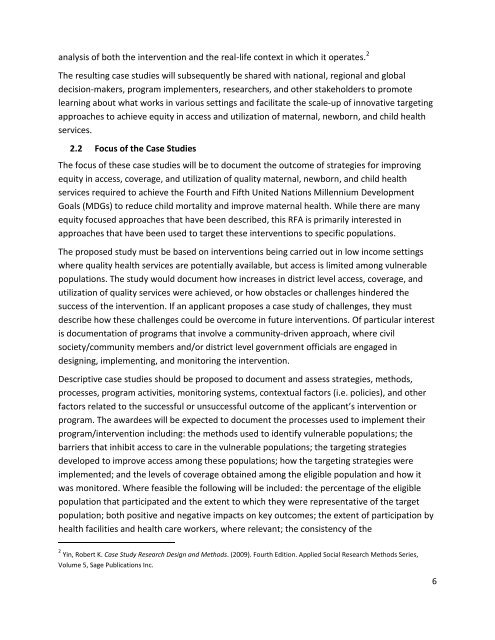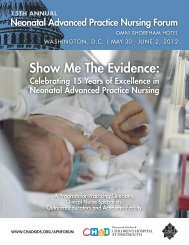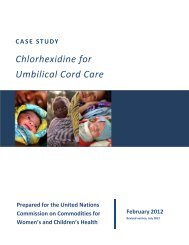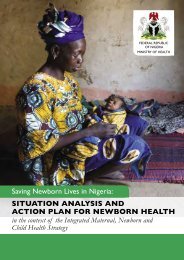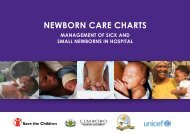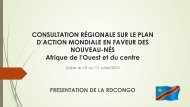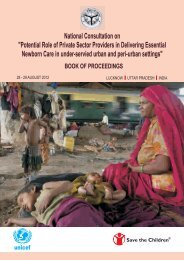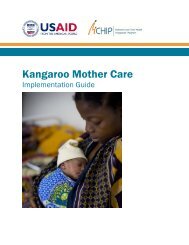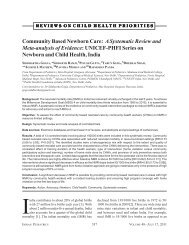Draft RFA - Translating Research into Action | TRAction Project
Draft RFA - Translating Research into Action | TRAction Project
Draft RFA - Translating Research into Action | TRAction Project
- No tags were found...
Create successful ePaper yourself
Turn your PDF publications into a flip-book with our unique Google optimized e-Paper software.
analysis of both the intervention and the real-life context in which it operates. 2The resulting case studies will subsequently be shared with national, regional and globaldecision-makers, program implementers, researchers, and other stakeholders to promotelearning about what works in various settings and facilitate the scale-up of innovative targetingapproaches to achieve equity in access and utilization of maternal, newborn, and child healthservices.2.2 Focus of the Case StudiesThe focus of these case studies will be to document the outcome of strategies for improvingequity in access, coverage, and utilization of quality maternal, newborn, and child healthservices required to achieve the Fourth and Fifth United Nations Millennium DevelopmentGoals (MDGs) to reduce child mortality and improve maternal health. While there are manyequity focused approaches that have been described, this <strong>RFA</strong> is primarily interested inapproaches that have been used to target these interventions to specific populations.The proposed study must be based on interventions being carried out in low income settingswhere quality health services are potentially available, but access is limited among vulnerablepopulations. The study would document how increases in district level access, coverage, andutilization of quality services were achieved, or how obstacles or challenges hindered thesuccess of the intervention. If an applicant proposes a case study of challenges, they mustdescribe how these challenges could be overcome in future interventions. Of particular interestis documentation of programs that involve a community-driven approach, where civilsociety/community members and/or district level government officials are engaged indesigning, implementing, and monitoring the intervention.Descriptive case studies should be proposed to document and assess strategies, methods,processes, program activities, monitoring systems, contextual factors (i.e. policies), and otherfactors related to the successful or unsuccessful outcome of the applicant’s intervention orprogram. The awardees will be expected to document the processes used to implement theirprogram/intervention including: the methods used to identify vulnerable populations; thebarriers that inhibit access to care in the vulnerable populations; the targeting strategiesdeveloped to improve access among these populations; how the targeting strategies wereimplemented; and the levels of coverage obtained among the eligible population and how itwas monitored. Where feasible the following will be included: the percentage of the eligiblepopulation that participated and the extent to which they were representative of the targetpopulation; both positive and negative impacts on key outcomes; the extent of participation byhealth facilities and health care workers, where relevant; the consistency of the2 Yin, Robert K. Case Study <strong>Research</strong> Design and Methods. (2009). Fourth Edition. Applied Social <strong>Research</strong> Methods Series,Volume 5, Sage Publications Inc.6


